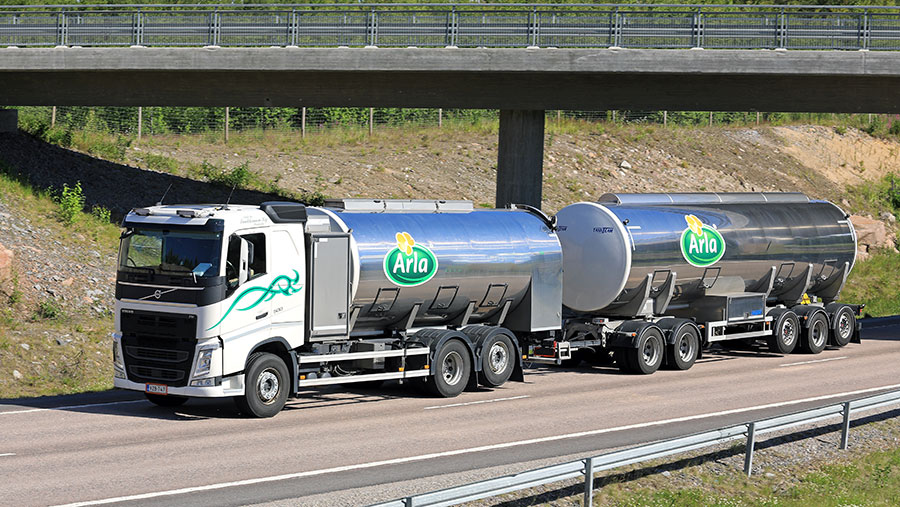Arla revenue rises in 2021, but co-op warns of volatility
 © Taina Sohlman/Adobe Stock
© Taina Sohlman/Adobe Stock Arla boosted its UK revenues to £1.17bn in 2021, but has warned that inflation and volatility are expected to affect the business well into 2022.
The farmer-owned co-op reports that the total Arla brand grew by 9.6% across its full range of products in 2021 while the milk price it paid to farmers increased by 23% across the year.
The business delivered overall branded volume growth of 3.8% despite what it said were the cumulative effects of driver and labour shortages and accelerating inflationary cost pressures.
In the first half of 2021, greater in-home consumption resulting from the extension of the Covid-19 lockdown underpinned performance.
See also: Are Arla producers ready for new rules on calves
When the food service sector reopened in the latter part of the year there was a 19% growth in branded volume for Arla UK’s food service business, driven by the Arla Pro brand, which experienced a sales increase of 31.7%.
It was a similar picture across the global Arla business, with global branded sales volumes growing 7.7%.
Tough year
However, Ash Amirahmadi, managing director of Arla Foods UK, admitted that 2021 was a tough year with several external challenges.
“Like many others in the industry we faced disruption from Covid and from labour shortages, but the biggest disruption has come from the unprecedented inflation, which is driving up the cost of operations across the supply chain. Against this challenging backdrop, we have performed well,’’ he said.
“The value of producing milk here in the UK is increasing like never before, due to the rising costs on farm and across the supply chain combined with global demand for dairy causing European commodity prices to continue their strong development.’’
Arla’s performance price – which measures the value it creates for each kilogram of owner milk – was 39.7 euro cents (33.43p) in 2021, compared with 36.5 euro cents (30.74p) in 2020.
Licensed sales of the Starbucks brand grew by more than 30%.
However, sales growth of brands including Lurpak and Anchor was affected by a readjustment of the butter and spreads category after a massive sales spike in 2020.
Both brands did improve their overall market share, but strategic branded revenue sales of Lurpak fell by 4.1% and Anchor by 6.3%.
At a global level, Arla’s business benefited from the continuing strong demand for dairy.
Arla Europe delivered an overall branded volume-driven growth of 2.3% while the international business unit saw 9.1% growth.
More of Arla’s milk was directed into the company’s global ingredients business, which grew by 14.5% in 2021.
Landscape hard to predict
However, Arla expects inflation and volatility to continue to affect the business and other sectors well into 2022.
The impact on consumer behaviour of on-going market volatility and high inflation will be “multifaceted and difficult to predict’’, said Arla Foods chief executive Peder Tuborgh.
“It is likely that we will see a slowdown in our branded growth as the market resettles at a new level,’’ he said.
“Our co-operative stands on a solid foundation and, as we have demonstrated in 2020 and 2021, we will continue our strong operational execution throughout our supply chain to meet any new demands and requirements in this uncertain environment.’’
Arla will publish its full annual report on 24 February following the company’s board of representatives meeting.
Which brands saw sales growth?
- Cravendale: +6.7%
- Arla Skyr: +12.5%
- Arla Protein: +38%
